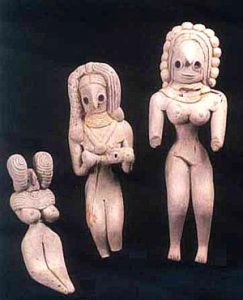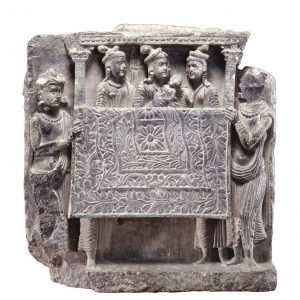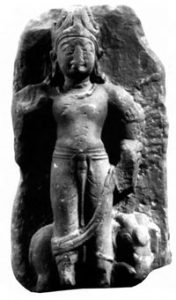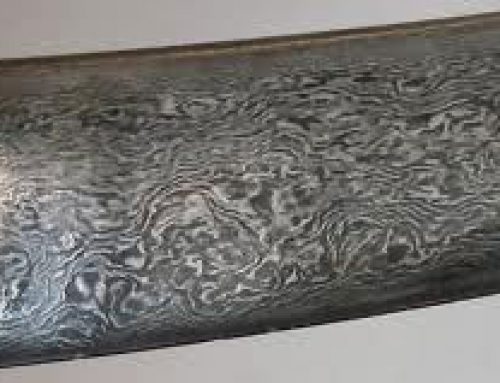
Indian art: Clay figurines from Mehrgahr, from the Stone Age
The earliest art
Major themes of Indian art seem to begin emerging as early as the Stone Age. The earliest art looks something like Mesopotamian art from Iraq. But it is noticeably different too. It’s like later art in India in some ways. So local art traditions may start this early.
Bronze Age art
These same ideas appear in the Harappan period. That’s about 2500 BC. Although nobody is sure yet, some Harappan images look like later images of Vishnu and Shiva.
Harappan art
Harappan architecture
Who were the Harappans?
All our ancient India articles
Central Asian influences
The Yamnaya arrived in India from Central Asia around 1500 BC. They brought new Central Asian artistic ideas with them. But there is very little art from the Iron Age in India, so we don’t know much about it. Probably people were mostly carving in wood, rather than stone. So there isn’t much left today.

Buddha’s return to Kapilavastu, Swat Valley, Pakistan (ca. 50 BC to 50 AD)
Who were the Yamnaya?
Vedic India
Vedic architecture
Central Asian art
Buddhism and Indian art
Around 500 BC, a lot of people in India converted to Buddhism. Buddhism brought with it some new artistic themes.
What is Buddhism?
But at first nobody made images of the Buddha. They only built stupas (STOO-pahs). Stupas were symbolic representations that didn’t look like a person. Or they carved his footprints into stone, so you could only see the footprints. It was as if there was an invisible statue there.
Greek artists and Indian sculpture

Indra, 4-5th c. AD (Mathura, India)
Then the conquests of Alexander of Macedon, in the 320s BC, changed Indian sculpture. Alexander left colonies of Greek veteran soldiers in Afghanistan and Pakistan. These soldiers attracted Greek sculptors. Maybe some of the soldiers were sculptors themselves.
Hellenistic Greek sculpture
Who was Alexander of Macedon?
Art of the Mauryan Empire
Their Greek-style carvings got a lot of attention in India. And Indian artists learned a lot from them. So the first life-size stone statues in India date to the 200s BC, just after Alexander.
Ajanta and Ellora
The Guptan period, about 500 AD, was a good time for Indian artists. The rise of the Silk Road and increasing trade with East Africa made India a lot richer.
The Guptan Empire
Post-Mauryan art
Ancient Indian economy
What is Ajanta?
The Ellora caves

Vasudeva begs the donkey (Hosaholalu, southern India, 1200s AD)
With that money, artists carved the great cave temples of Ajanta and Ellora – which also served as hotels for the traders. Scenes from the life of the Buddha became popular, and statues of the Buddha.
Islam and medieval India
Finally, the Islamic faith and Islamic conquerors arrived about 1000 AD. Islam’s followers brought the East Mediterranean’s iconoclasm to India.
The Delhi Sultanate
Delhi Sultanate’s architecture
What is iconoclasm?
Islam also brought a love of varied and complex patterning derived from Arabic and Iranian models. This affected even Hindu artists who had not converted to Islam. Small Iranian-style miniature paintings also became popular.
Learn by doing: go see Indian art in a museum
More about Ancient India
Bibliography and further reading about Indian art:
Eyewitness India, by Manini Chatterjee (2002). Written for kids. It’s not specifically about Indian art, but you’ll find information about Indian art in this book.
Ancient India, by Virginia Schomp (2005). Written for teens. Again, not specifically about Indian art, but very good for reports, and there is information about Indian art.
Indian Art (Oxford History of Art), by Partha Mitter (2001). A good survey of Indian art for ordinary people, going from ancient India to modern India.
Indian Art, by Vidya Dehejia (1997). Also written for adults. The author’s the curator of Indian art at the Smithsonian Institution. She emphasizes the close relationship between Indian art and religion.




